Chernobyl Disaster Worksheets
Do you want to save dozens of hours in time? Get your evenings and weekends back? Be able to teach about the Chernobyl Disaster to your students?
Our worksheet bundle includes a fact file and printable worksheets and student activities. Perfect for both the classroom and homeschooling!
Resource Examples
Click any of the example images below to view a larger version.
Fact File
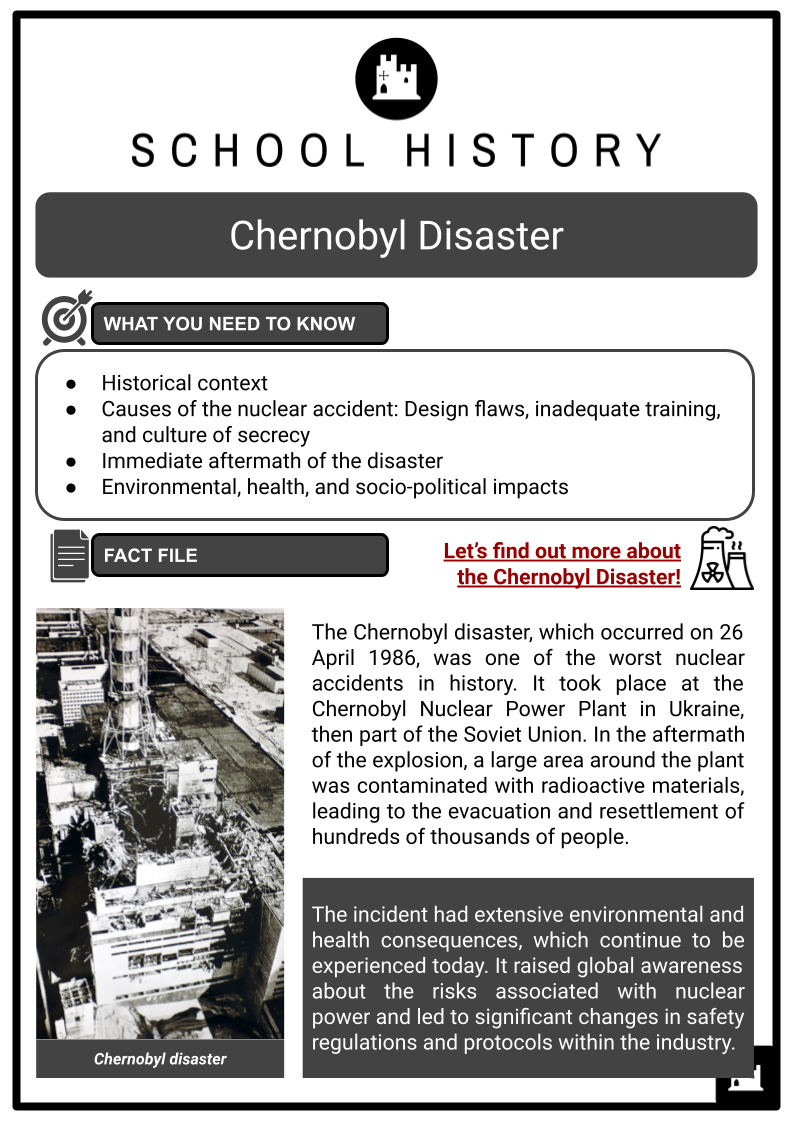
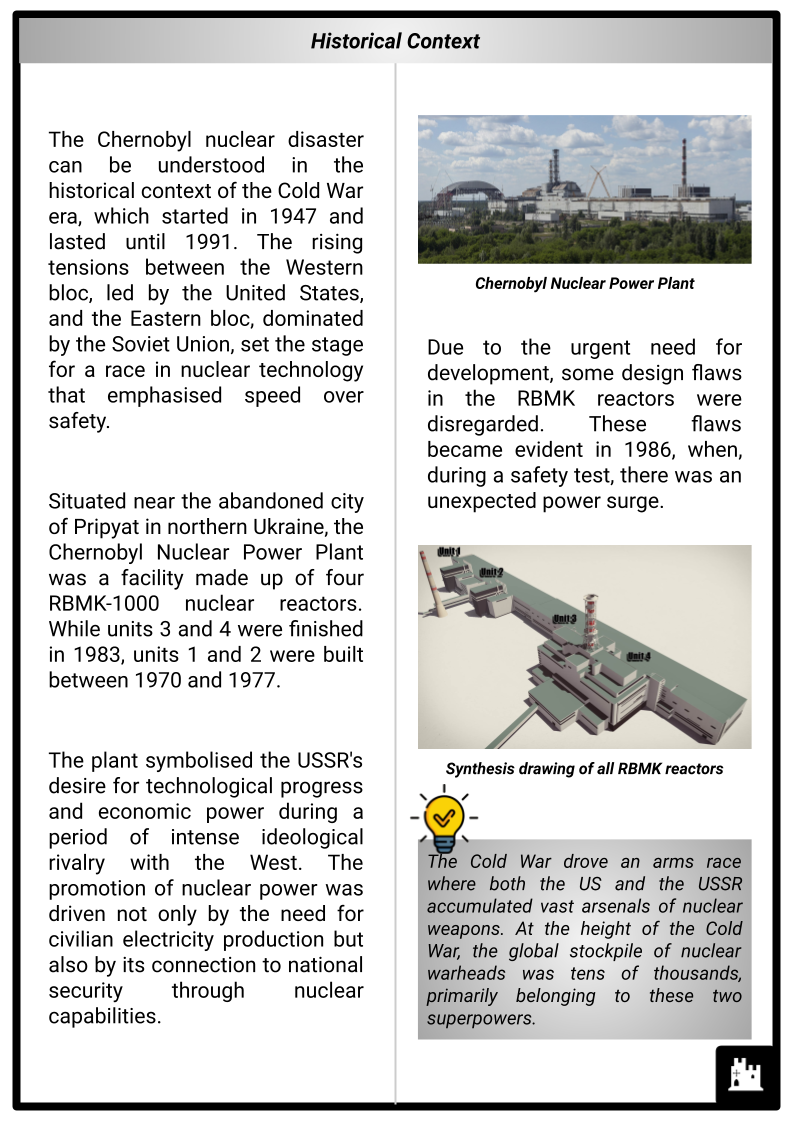
Student Activities
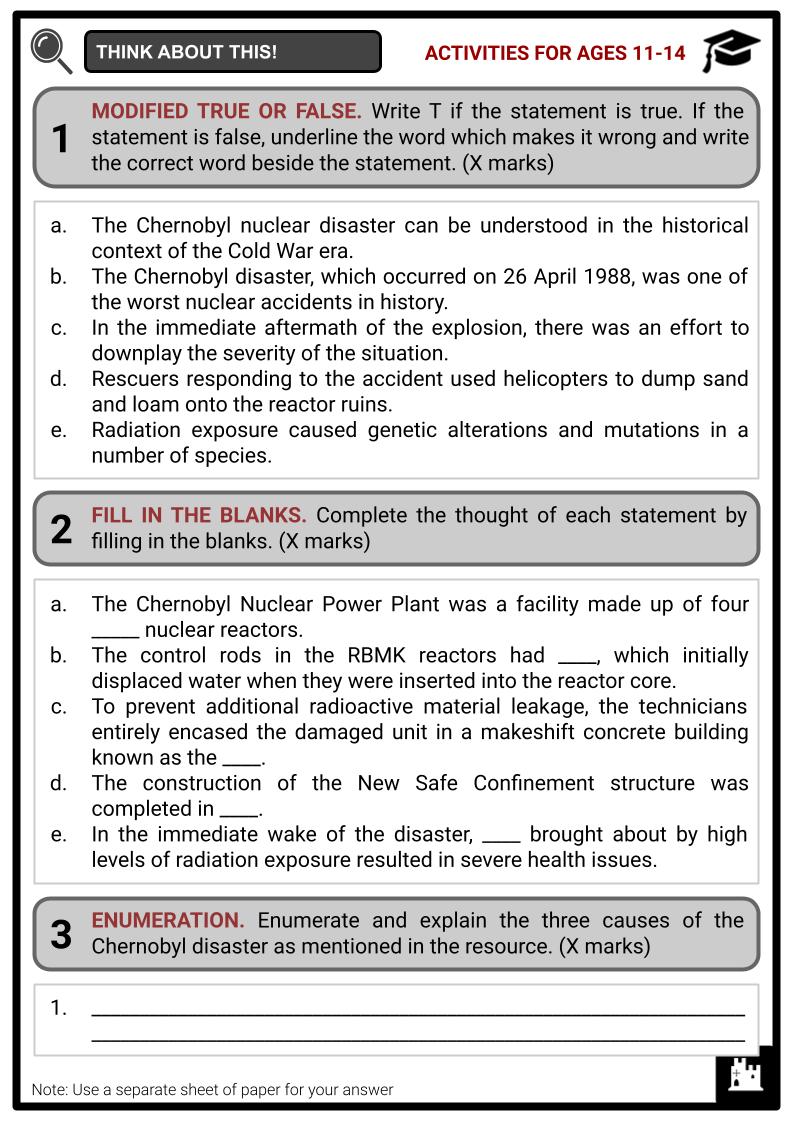
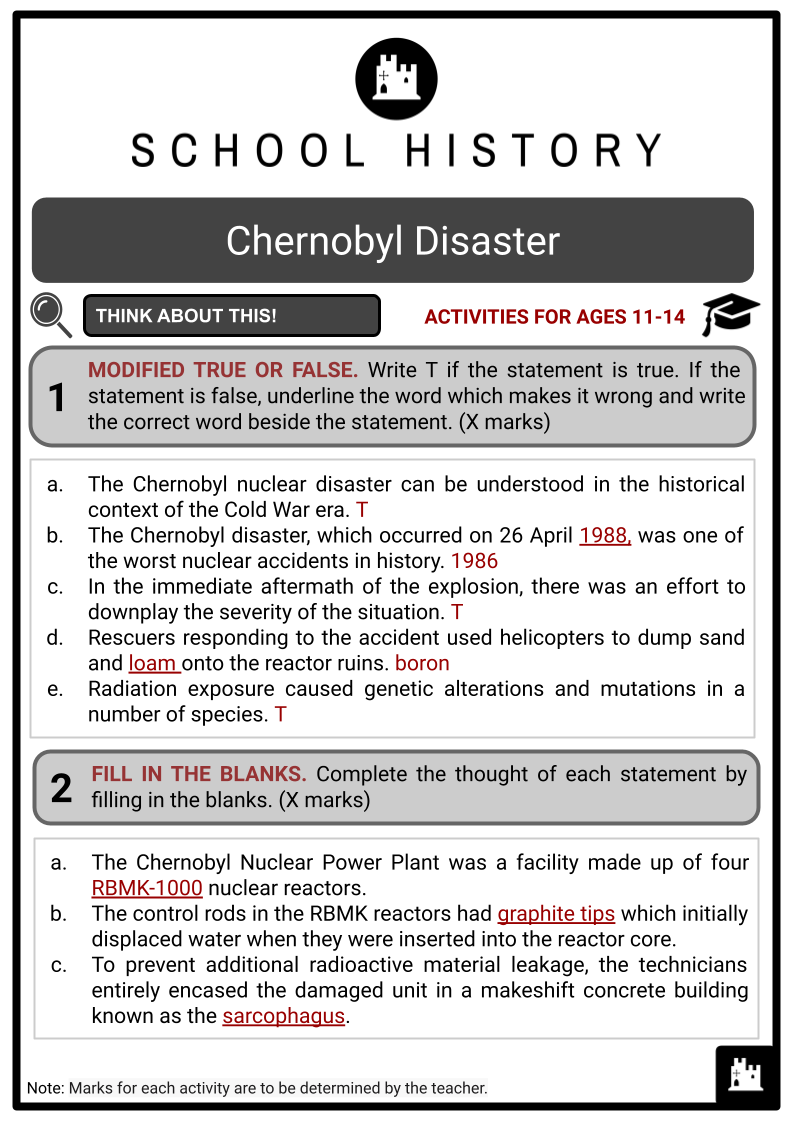
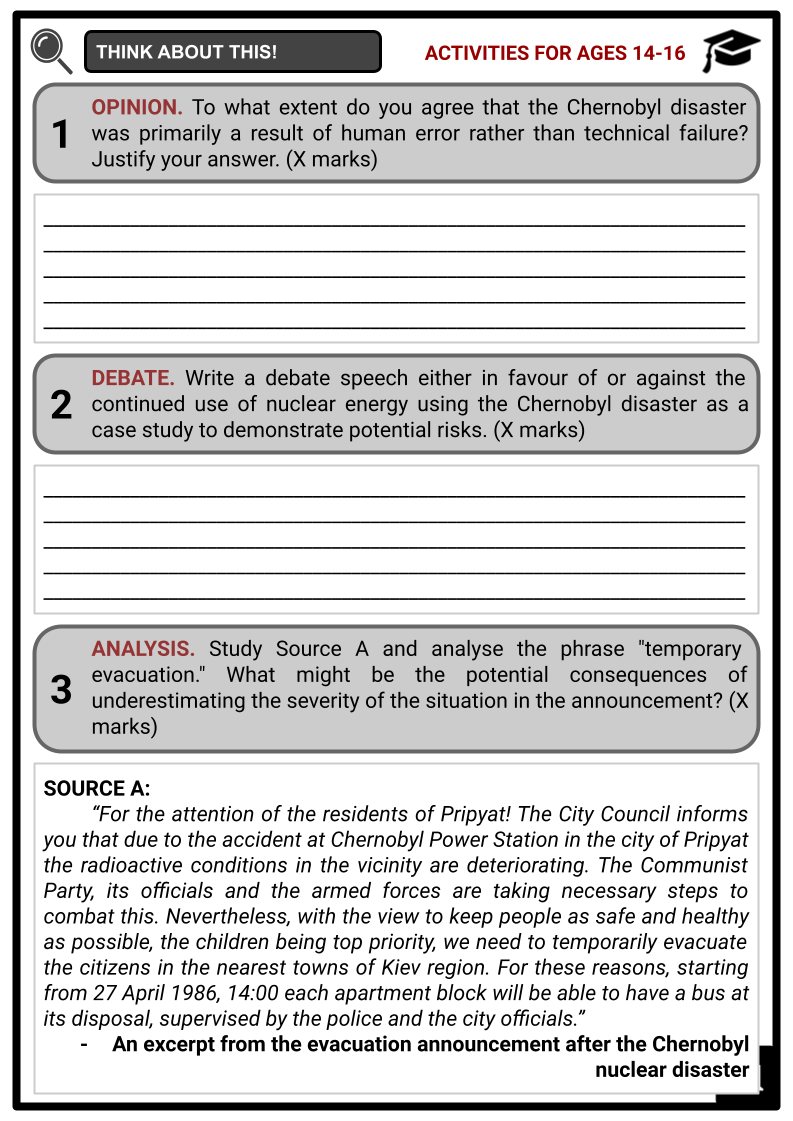
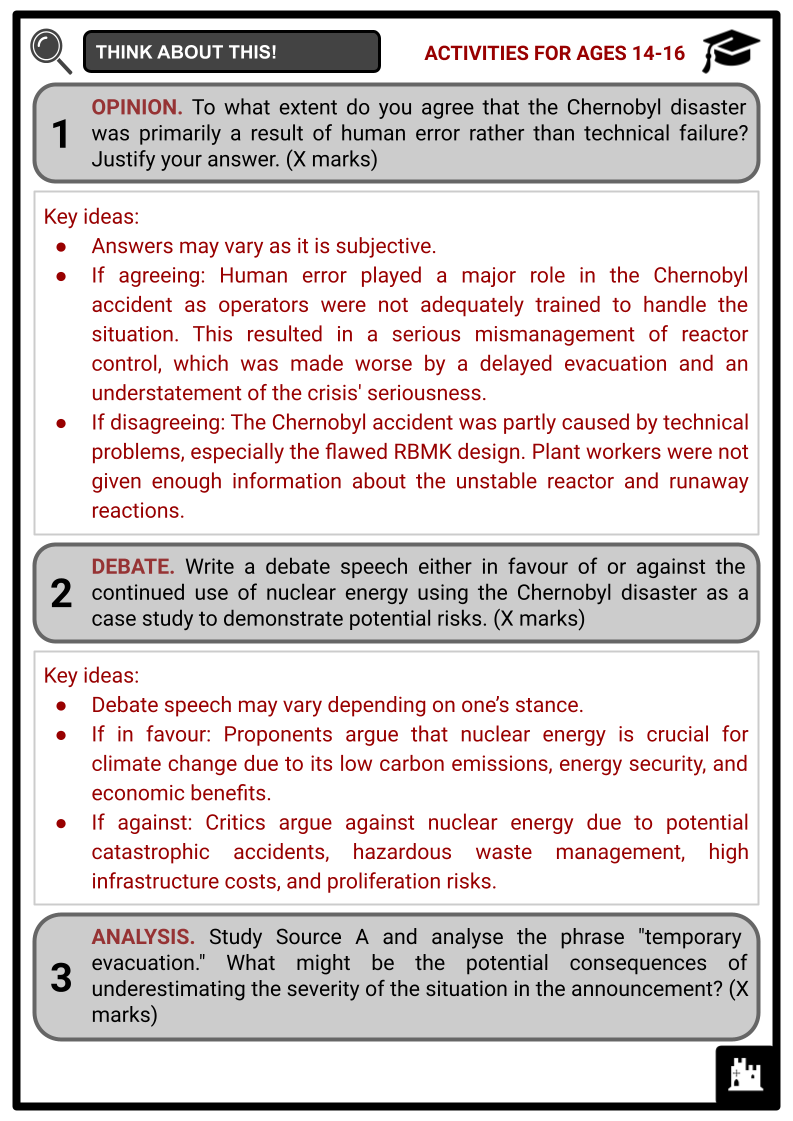
Summary
- Historical context
- Causes of the nuclear accident: Design flaws, inadequate training, and culture of secrecy
- Immediate aftermath of the disaster
- Environmental, health, and socio-political impacts
Key Facts And Information
Let’s find out more about the Chernobyl Disaster!
The Chernobyl disaster, which occurred on 26 April 1986, was one of the worst nuclear accidents in history. It took place at the Chernobyl Nuclear Power Plant in Ukraine, then part of the Soviet Union. In the aftermath of the explosion, a large area around the plant was contaminated with radioactive materials, leading to the evacuation and resettlement of hundreds of thousands of people.
The incident had extensive environmental and health consequences, which continue to be experienced today. It raised global awareness about the risks associated with nuclear power and led to significant changes in safety regulations and protocols within the industry.
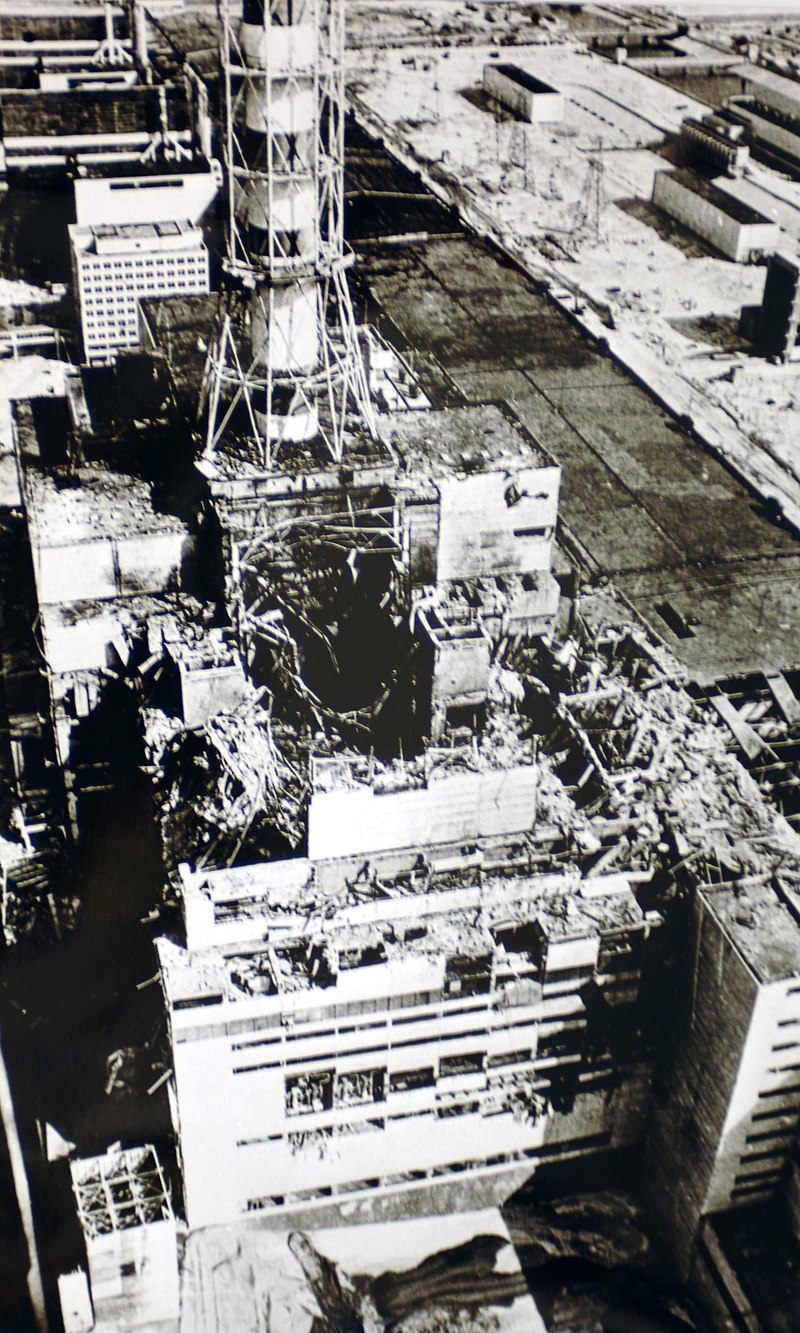
Historical Context
- The Chernobyl nuclear disaster can be understood in the historical context of the Cold War era, which started in 1947 and lasted until 1991. The rising tensions between the Western bloc, led by the United States, and the Eastern bloc, dominated by the Soviet Union, set the stage for a race in nuclear technology that emphasised speed over safety.
- Situated near the abandoned city of Pripyat in northern Ukraine, the Chernobyl Nuclear Power Plant was a facility made up of four RBMK-1000 nuclear reactors. While units 3 and 4 were finished in 1983, units 1 and 2 were built between 1970 and 1977.
- The plant symbolised the USSR's desire for technological progress and economic power during a period of intense ideological rivalry with the West. The promotion of nuclear power was driven not only by the need for civilian electricity production but also by its connection to national security through nuclear capabilities.
- Due to the urgent need for development, some design flaws in the RBMK reactors were disregarded. These flaws became evident in 1986, when, during a safety test, there was an unexpected power surge.
The Cold War drove an arms race where both the US and the USSR accumulated vast arsenals of nuclear weapons. At the height of the Cold War, the global stockpile of nuclear warheads was tens of thousands, primarily belonging to these two superpowers.
Causes of the Nuclear Accident
- The safety test that took place at the Chernobyl Nuclear Power Plant was intended to simulate a power outage and test the ability of the reactor's turbine generator to maintain power for essential safety systems until the backup diesel generators could come online. The purpose of the test was to improve the reactor's safety mechanisms and ensure that it could safely handle a sudden loss of power.
- As the safety test began in the early hours of 26 April 1986, a series of errors and miscalculations unfolded.
Chernobyl was one of the largest nuclear power plants in Europe and could produce enough electricity to meet the energy needs of roughly a city the size of Kiev.
Design Flaws
- One of the major design flaws of the Chernobyl Nuclear Power Plant was the use of RBMK-1000 reactors, which had inherent flaws in their design. The most notable flaw was the positive void coefficient, which means that as the coolant in the reactor turned to steam, there was an increase in reactivity.
- This meant that the reactor became more reactive and increased the power output as the water around the fuel rods turned to steam, leading to a rapid and uncontrollable power surge.
- Furthermore, the control rods in the RBMK reactors had graphite tips, which initially displaced water when they were inserted into the reactor core. This transient increase in reactivity could lead to a surge in power output if not carefully managed. These design flaws combined to create a situation where a runaway chain reaction was possible under certain conditions, which ultimately led to the disaster.
Inadequate Training
- The operators at the Chernobyl Nuclear Power Plant were not adequately trained to handle the complex and potentially dangerous procedures involved in conducting the safety test. The lack of proper training meant that the operators were ill-prepared to respond to the unexpected power surge and the rapid increase in reactivity.
- Furthermore, the culture within the nuclear industry at the time emphasised speed and productivity over safety and thorough training. This created an environment where shortcuts were taken and crucial training procedures were often overlooked in the pursuit of meeting ambitious production targets.
RBMK stands for "Reaktor Bolshoy Moshchnosti Kanalnyy," which translates to "High Power Channel-type Reactor" in Russian. These reactors utilise graphite and natural uranium as fuel.
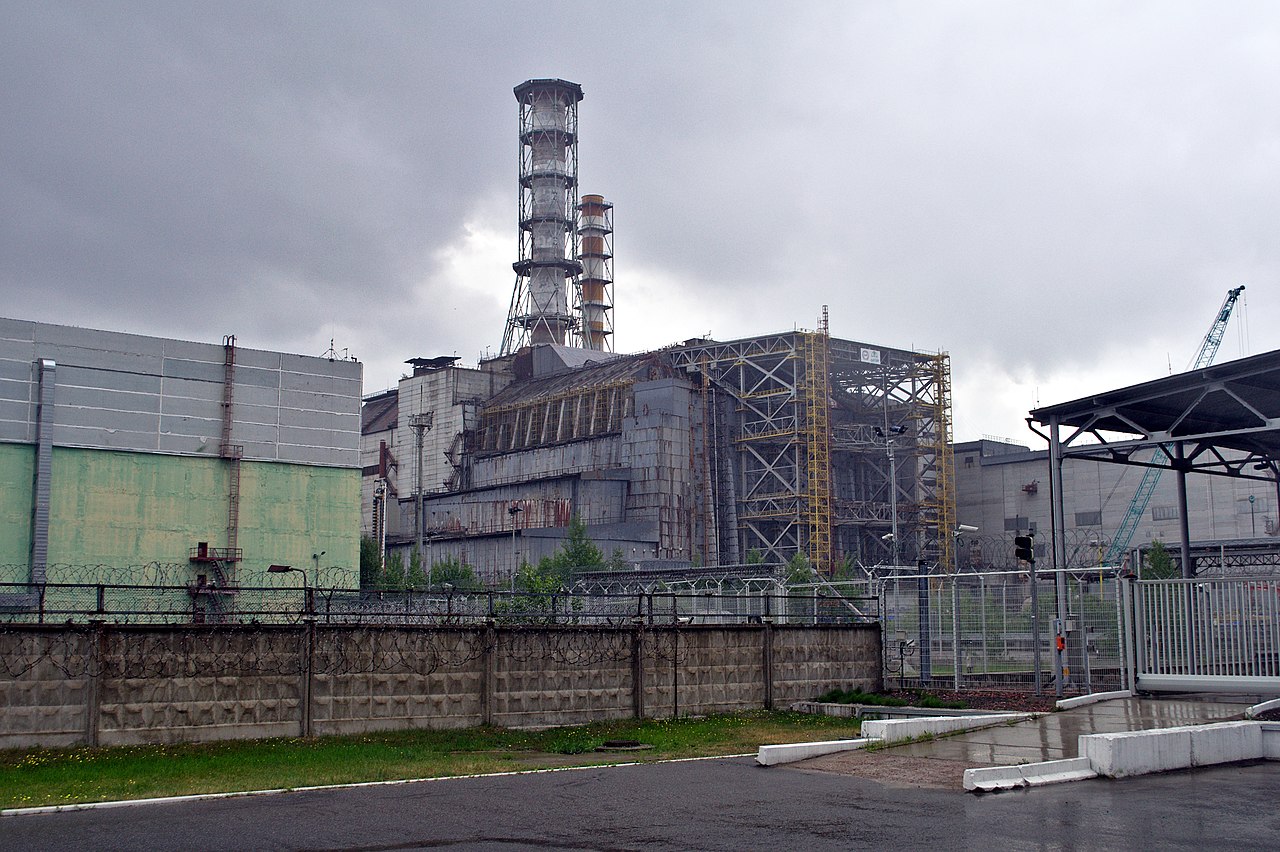
Culture of Secrecy
- Information about the flaws in the RBMK-1000 reactors and the potential risks associated with them was kept hidden from the international community and even from many within the Soviet Union itself. Decisions about reactor design, safety protocols, and operational procedures were made behind closed doors, and there was a reluctance to share information that could potentially tarnish the image of the Soviet nuclear programme.
- The lack of transparency and public accountability meant that critical safety concerns were not adequately addressed, and the consequences of these flaws were not fully understood until the disaster occurred.
- Furthermore, the culture of secrecy extended beyond technical details to the reporting and handling of the disaster itself.
- In the immediate aftermath of the explosion, there was an effort to downplay the severity of the situation and suppress information about the true extent of the radioactive release.
- This delayed the implementation of necessary measures to protect the population and worsened the long-term impact of the disaster on public health and the environment.
- The combination of these factors led to an explosion that ripped through the reactor, releasing a massive amount of radioactive material into the environment. The explosion ignited a fire that burned for nine days, spewing radioactive particles into the atmosphere and creating a radioactive plume that spread across Europe and beyond.
Immediate Aftermath of the Disaster
- As news of the explosion and subsequent release of radioactive material spread, authorities and emergency responders were faced with the task of assessing the extent of the damage and implementing measures to protect public health and safety. One of the first challenges was to establish the scope of the radioactive contamination and its potential impact on nearby communities and the environment.
Before the disaster, the plant was seen as a symbol of Soviet engineering prowess and was intended to showcase the benefits of nuclear power.
- Emergency response teams, including firefighters, plant workers, and military personnel, were mobilised to extinguish the fires and prevent further releases of radiation. Efforts were also made to evacuate residents from the most heavily affected areas and establish a restricted zone around the plant to limit exposure to radiation.
- Rescuers responding to the accident used helicopters to dump sand and boron onto the reactor ruins. The purpose of the sand was to put out the fire and prevent more releases of radioactive material, while the intent of the boron was to prevent further nuclear reactions.
The Chernobyl disaster released at least 100 times more radiation than the atomic bombs dropped on Hiroshima and Nagasaki.
- To prevent additional radioactive material leakage, the technicians entirely encased the damaged unit in a makeshift concrete building known as the "sarcophagus" a few weeks after the accident.
- In order to lessen radioactive pollution at and around the plant, the Soviet government also cleared and buried around a square mile of pine forest. Chernobyl's remaining three reactors were forced to close permanently, with the final reactor closing in December 2000.
- About 115,000 people were evacuated from the most severely contaminated districts by the Soviet (and later, Russian) government in 1986, and another 220,000 individuals in the years that followed.
Environmental Impacts
- The radioactive fallout from the explosion and fire contaminated large areas of soil and water. When radioactive isotopes fell to the ground, plants absorbed them, and they eventually made their way into the food chain. This contamination has had a lasting impact on agricultural lands and ecosystems.
- Radiation exposure caused genetic alterations and mutations in a number of species, which had an effect on their ability to reproduce and maintain good health. Populations of organisms, including insects, birds, and mammals, were significantly reduced in the most contaminated areas. The ecological balance was disrupted, and the long-term effects on biodiversity and ecosystem dynamics continue to be studied and monitored.
- In the decades since the disaster, continued efforts have been made to contain and manage the ongoing environmental impacts of Chernobyl. This includes ongoing monitoring of radiation levels in soil, water, and wildlife, as well as the implementation of measures to limit human exposure to residual contamination.
- The construction of the New Safe Confinement structure, completed in 2016, aims to further contain the remnants of the damaged reactor and reduce the risk of further environmental contamination.
The city of Pripyat was not immediately evacuated. The government only began evacuating the residents more than 24 hours after the explosion.
Health Impacts
- In the immediate wake of the disaster, acute radiation sickness brought about by high levels of radiation exposure resulted in severe health issues and fatalities among first responders and plant workers. Additionally, the release of radioactive materials resulted in long-term health effects, including an increased incidence of thyroid cancer among residents in the affected areas, particularly due to exposure to radioactive iodine.
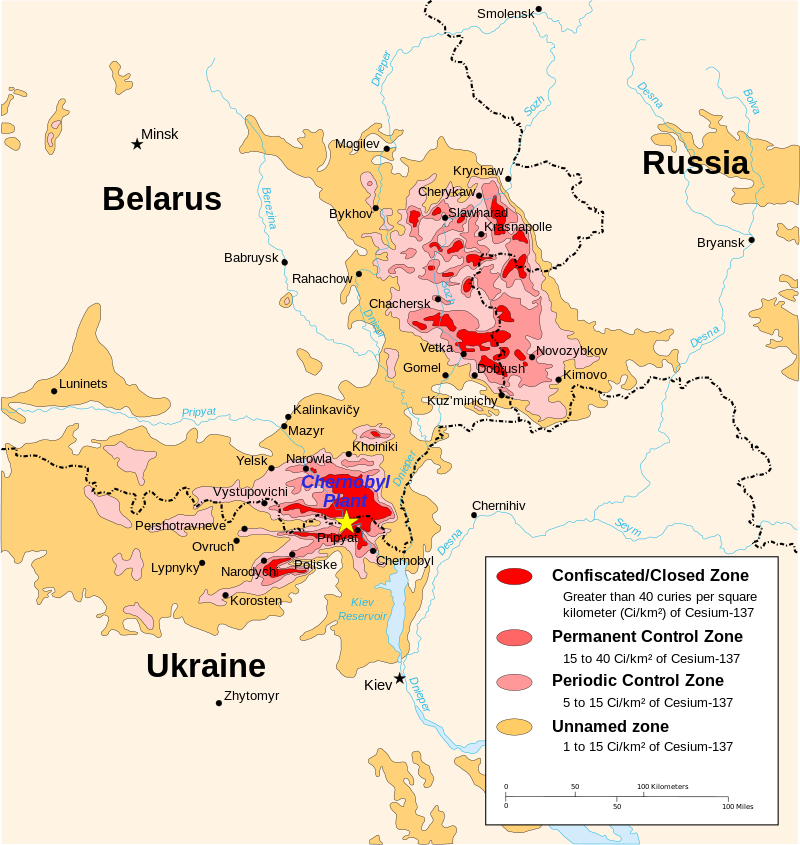
The United Nations Scientific Committee on the Effects of Atomic Radiation has reported that more than 6,000 children and adolescents developed thyroid cancer after being exposed to radiation from the Chernobyl incident.
- The ongoing environmental contamination from the radioactive fallout has posed risks to human health through the consumption of contaminated food and water. The radioactive isotopes deposited on the ground have been absorbed by plants and subsequently entered the food chain, leading to the ingestion of radioactive materials by humans.
- The effects on human health went beyond the Chernobyl site, reaching individuals in nearby countries and throughout Europe as the radioactive cloud spread across the continent. Efforts to mitigate the health impacts of the Chernobyl disaster have included ongoing medical surveillance and support for individuals exposed to radiation, as well as public health initiatives aimed at minimising further exposure to residual contamination.
Socio-political Impacts
- At the domestic level, the Chernobyl disaster prompted a reassessment of the management of the nuclear industry and the role of government oversight. Under the leadership of Mikhail Gorbachev, calls for transparency and accountability grew. His policies of 'glasnost' (openness) and 'perestroika' (restructuring) led to a change in public perception of the government's handling of sensitive information and its prioritisation of public safety.
- Internationally, the Chernobyl disaster sparked conversations about nuclear safety and the potential consequences of catastrophic failures in nuclear facilities. The event led to the development of international conventions and agreements aimed at preventing similar disasters and addressing the transboundary impacts of nuclear incidents.
- The sociopolitical aftermath of the Chernobyl disaster included efforts to address the needs of affected communities and individuals, both in terms of health support and socioeconomic assistance.
- The long-term effects on the affected areas sparked discussions about environmental justice, compensation for disaster victims, and the responsibility of governments to provide resources for rehabilitation and recovery.
Due to high radiation levels that damaged the robots' electronics, attempts to employ robots to clean up the incident site failed, and human liquidators were forced to take on the hazardous task of cleaning and containing the area.
Image Sources
- https://upload.wikimedia.org/wikipedia/commons/thumb/8/87/IAEA_02790015_%285613115146%29.jpg/800px-IAEA_02790015_%285613115146%29.jpg
- https://upload.wikimedia.org/wikipedia/commons/thumb/d/d6/Chernobyl_-_power_plant_-_reactor_4_02.jpg/1280px-Chernobyl_-_power_plant_-_reactor_4_02.jpg
- https://upload.wikimedia.org/wikipedia/commons/thumb/2/23/Chernobyl_radiation_map_1996.svg/800px-Chernobyl_radiation_map_1996.svg.png
Frequently Asked Questions
- What caused the Chernobyl disaster?
The Chernobyl disaster was caused by reactor design flaws and human error during a safety test.
- How many people died as a result of the Chernobyl disaster?
The exact number is still debated, but it's estimated that thousands of people died because of the disaster, including both immediate deaths and those due to long-term health effects.
- What were the immediate effects of the Chernobyl disaster?
The immediate effects included the explosion of the reactor, the release of radioactive materials into the atmosphere, and the evacuation and relocation of thousands of people from the surrounding area.
